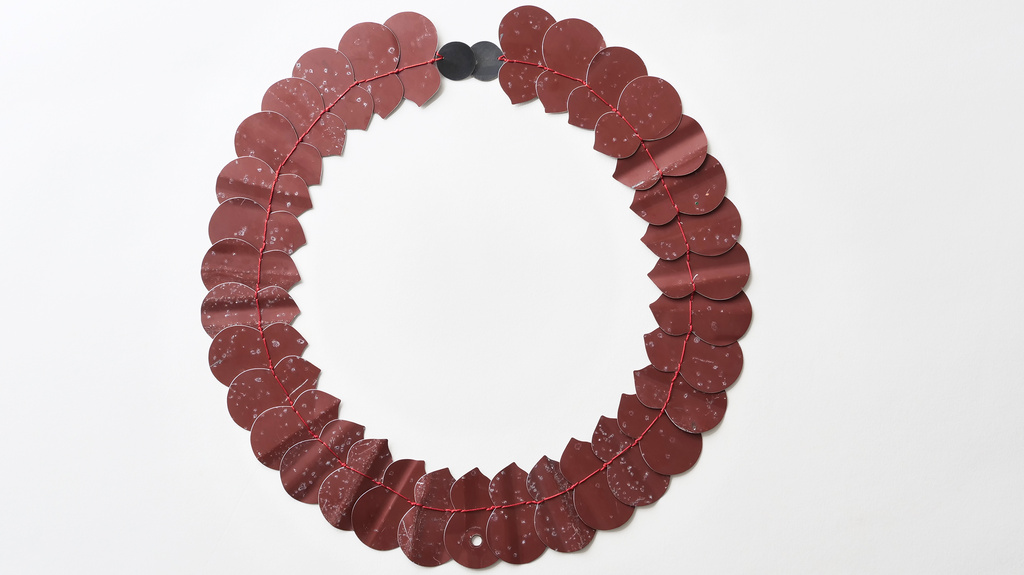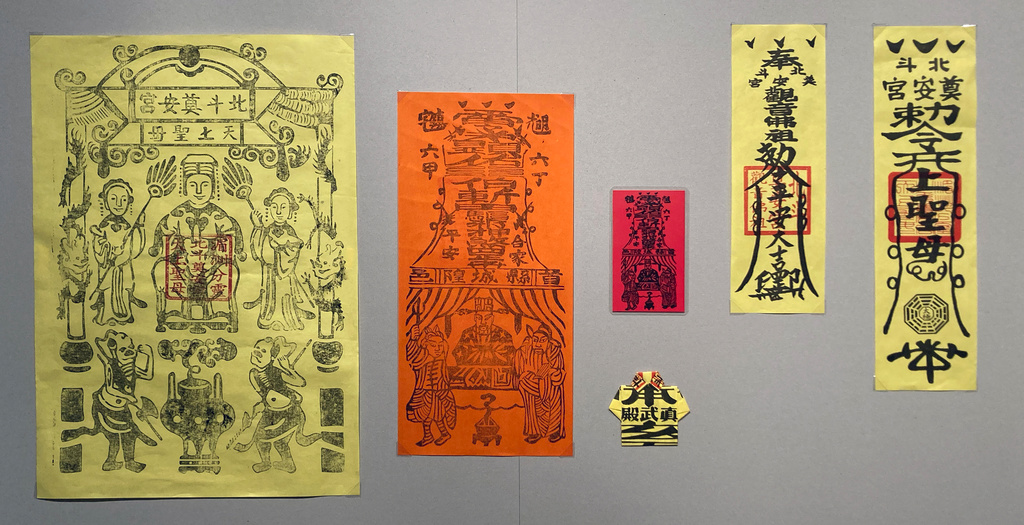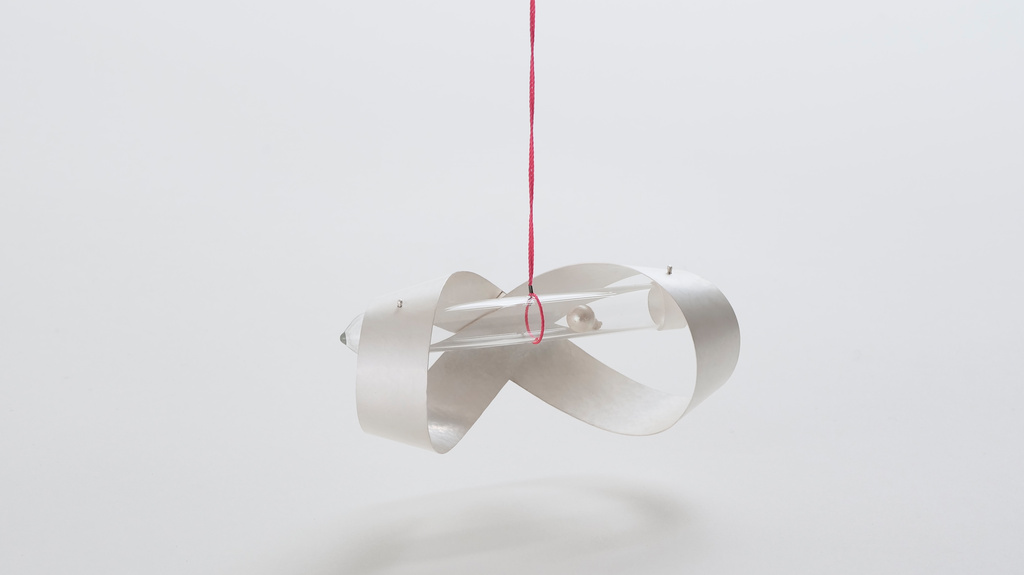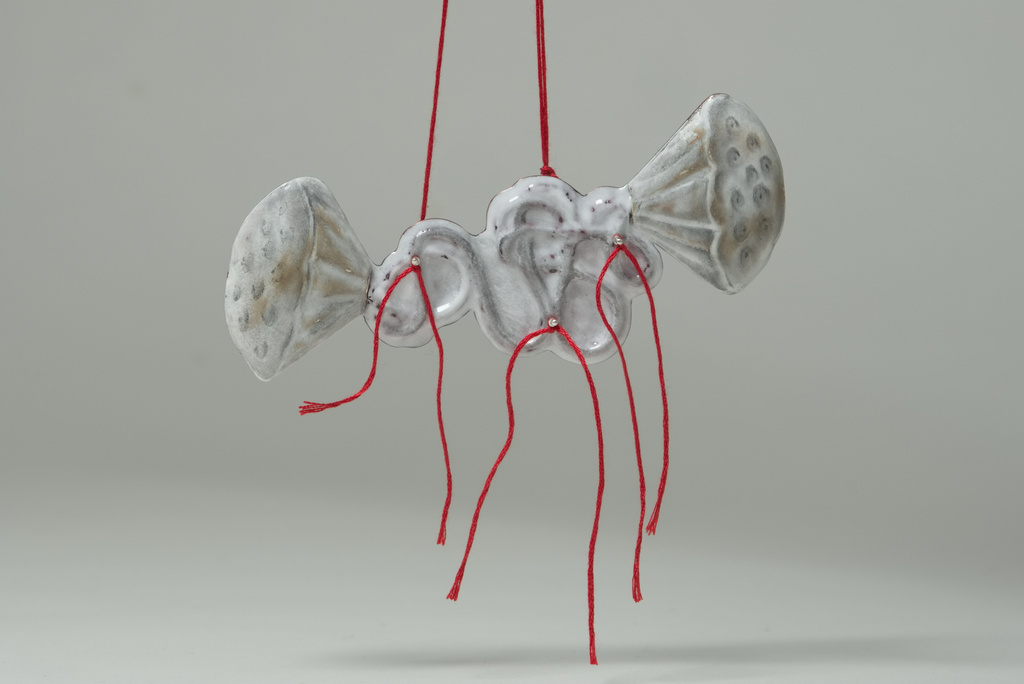
Anvita Jain marvels at intriguing charms devised by a Taiwanese jewellery collective.
As I walked the streets of Munich on a rather cold March day, somewhat in a frenzy, trying to catch as many exhibitions as my feet could manage during Munich Jewellery Week, I arrived at Gallery Kobeia to see ‘pin pin an an: Amulets Reimagined’ by 4 Taiwanese jewellery artists. Upon entering, my eyes follow a bright red rope along the left wall, eventually zigzagging into the depth of the gallery, hung with contemporary jewellery pieces. On a separate wall on the right side, there’s another display of what turns out to be traditional Taiwanese amulets along with their meanings. I’m immediately intrigued, as my Indian sensibilities can very easily draw parallels between the two cultures.
Amulets and talismans are among the most ancient forms of jewellery, offering protection, attracting good fortune, and warding off misfortune or malevolent forces throughout human history. Taiwan, as an island, exists in a dual state, geographically independent yet naturally open to external influences. It has long been a crossroads of diverse cultures and beliefs. Buddhism, Taoism, indigenous customs, and many others have shaped a rich and varied amulet culture, where every region, religion, family and even individual carries their own unique charms and rituals. The exhibition title pin pin an an, a phrase that resonates deeply in Taiwanese culture, means safe and sound. The Dodoer team of four artists—An Chi Wang, I Ting Wang, Yu Chun Chen, and Amal Yung Huei Chao—who are jewellery makers as well as educators in metal and jewellery, explore and reinterpret Taiwanese amulets as objects that provide an anchor, comfort and a sense of security in a fast-paced and uncertain world.
- Amal Yung-huei, Chao-Counting Blessings-Dismantled roofing material, silver, thread; photo: Giant Hsu
- Culture wall; photo: Anchi Wang
- Culture wall; photo: Anvita Jain
- Yu Chun Chen, Balancing Act II silver925, glass, acoya pearl Giant Hsu
- Yu Chun Chen, Guardian Beep, 2025, silver velvet ribbon; photo: GiantHsu
- Amal Yung-huei, Chao – The Cases, dismantled roofing material, stainless steel, thread: photo: Giant Hsu
- I-Ting Wang, Votive (Guangming Lantern), copper, enamel, silver; photo: Giant Hsu
- I-Ting Wang, Lot of Us, copper, enamel, silver; photo: Giant Hsu
- An-chi Wang, Gourd Carries Blessings, Gourd, silver, stainless steel wire; photo: Giant Hsu
- Skills pays bills, An Chi Wang
I walk over to the right wall to encounter a variety of traditional rituals and objects, each telling a story of hope, faith, superstition and a bit of magic. Handprinted and scripted talismans symbolising peaceful homes, vases promising safety, fish swimming in abundance, jade guarding against misfortune and red threads weaving destined lovers together. Tiger-shaped fragrant sachets filled with mugwort, realgar, and sandalwood powder protect children from disease and distress in warm weather. Taoist rituals, such as holding an amulet above an incense burner in a temple, let the rising smoke purify and charge it with divine blessings. There is also a more recent addition—a corn snack called Kuai-Kuai, meaning “well-behaved”. Transcending its original purpose to become an unexpectedly popular contemporary talisman, it is widely placed on electronic devices, office desks and industrial machinery to ensure smooth operation. The practices and objects embody Taiwan’s unique fusion of superstition and modernity, while reflecting collective beliefs and humour.
I find it heartwarming that, along with a glimpse of this fascinating world, the artists also provide the viewer with insight into the cultural roots that inspire their contemporary amulet creations, hung from a thick red string at the other end of the space. Red is an auspicious colour in Taiwan, believed to bring good luck. The pieces are purposely hung above eye level to create a sense of wonder, making the viewer look up to interact with them. Many traditional motifs are present in the contemporary works, especially those of An-Chi Wang and I-Ting Wang, but reimagined with alternative materials and forms. Both play with symbols that are humorous homophones in Mandarin, such as “luck”, “gourd”, “butterfly”, “teapot” and “bat”, making them commonly used motifs in traditional jewellery, thought to carry blessings and bring good fortune. “Skills Pay the Bills,” a necklace by An-Chi Wang, points to the hope for survival through one’s knowledge, which can often be a source of insecurity for artists. “Lotus” seeds which symbolise fertility turn into I-Ting Wang’s piece called “lot of us”, signifying the wish for starting a family.
As a Taiwanese Muslim, Amal Yung-huei Chao spent her formative years mainly in the Middle East before returning to Taiwan for university. Her unique insight into Taiwanese culture marks her work as an artist and educator. Chao’s works are based on her observations of cultural habits in her surroundings. She considers a variety of ways we protect ourselves and uses corrugated roofing material, commonly used in building and patching up houses in Taiwan, in her pieces.
The contemporary amulets here take on highly personal interpretations, moving away from the “sacred” but staying connected to the secular everyday life experiences. Yu Chun Chen’s silver whistle necklace is embedded in a more personal story.
“The first protective amulet I remember having was a plastic ‘whistle’ that my mother gave me when I was 13. As my schoolwork became more demanding, I needed to return home later, and my mother worried about me walking alone at night. Therefore, I always wore this whistle tightly around my neck—like I had a tiny guardian hanging around my neck and if I encountered danger, I could blast it.”
For the exhibition, the artist symbolically explores this memory through a series of pendants made from different materials, each possessing the quality of producing sound, becoming echoes of that childhood whistle—small, resonant protectors that embody the significance of being safe and sound. Chen studied and worked in Italy and Holland for 15 years before returning to Taiwan, where she continues to focus on creative endeavours and curatorial projects that foster international cultural exchanges.
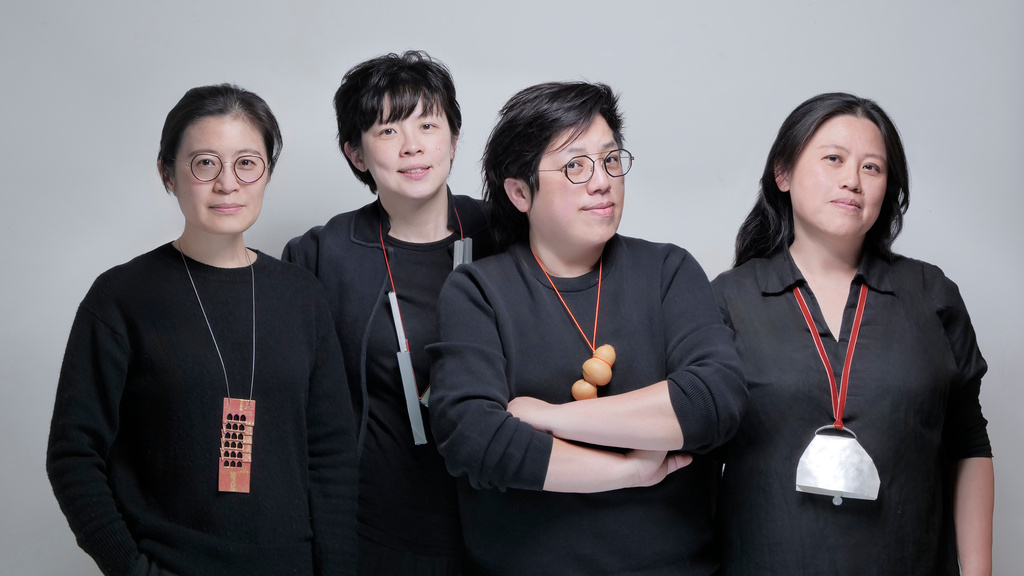
In 2022, the four artists established the Dodoer team, dedicating themselves to promoting the development of contemporary jewellery in Taiwan. While there has been enthusiasm for their work, cultivating a local audience that would support contemporary jewellery through acquiring the pieces has been a challenge, says Chun. Presenting conventional and contemporary amulets together is an attempt to redefine the context of Taiwanese contemporary jewellery by enabling an interaction between tradition and modernity, questioning and blurring the lines.
The conventional amulets, sans a few that are handmade by monks, are produced in large numbers and offered as souvenirs in tourist shops or places of worship, often to be activated through prayer and ritual to convey the meaning the wearer desires. These pre-made objects or symbols are believed to carry or be infused with divine energy, providing a sense of protection. The contemporary amulets, on the other hand, come into being through a process of making, which can be seen as a prayer or a ritual, as the object undergoes many repetitive actions by the maker, allowing the maker’s mind to manifest itself in the final piece.
The artefacts nod to the enduring human need for faith, belonging, security and well-being, bringing the age-old practices into the present and speaking to a continuum. With growing anxieties related to climate uncertainties and the current geopolitical scenario, amulets can serve as a tangible reminder of hope and strength. The act of carrying or wearing an amulet can become a ritual, promoting mindfulness and a sense of connection to something larger than oneself.
About Anvita Jain
 Anvita Jain is an India-born creative practitioner based in the West German countryside. She works across drawing, textiles, jewellery and graphic design. Currently, she is developing a craft-based artistic practice, research, writing and curation at the Academy of Fine Arts, Munich as part of the Jewellery and Hollowware program. Her research (Project Bawra) focuses on “Contemporary Body Ornament in a Global South Asian Context”.
Anvita Jain is an India-born creative practitioner based in the West German countryside. She works across drawing, textiles, jewellery and graphic design. Currently, she is developing a craft-based artistic practice, research, writing and curation at the Academy of Fine Arts, Munich as part of the Jewellery and Hollowware program. Her research (Project Bawra) focuses on “Contemporary Body Ornament in a Global South Asian Context”.

